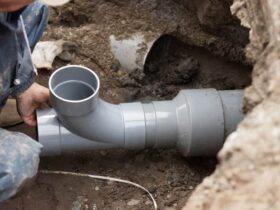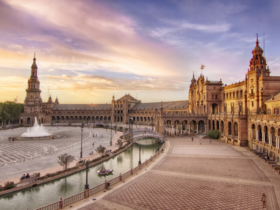Permoculture is becoming an increasingly popular set of tools and ideas for farmers and gardeners. This is an approach to agriculture, which seeks to simulate the site in such a way that it is aesthetically pleasant, productive and environmentally balanced, designing ecosystems that become self -regulating and regenerating, reducing the need for human work over time. This approach combines such disciplines as ecology, technology, economics, gardening, evolution, energy systems, social justice and other seemingly unrelated areas.
It is important to note that permaculture is most often used to create effective and productive landscapes that support themselves through the regeneration of biodiversity and lost fertility.
If you want to design your site well or just add more methods of environmental gardening to your repertoire, permaculture may interest you.
How a permaculture works?
Permaculture uses a set of three ethical values and seven principles to combine people with the ecology and landscape potential.
3 ethical values
Ethics is the basis for the design of permaculture and includes three values: care of land, care for people and restoration of abundance.
1. Caring for the earth
We are as healthy as our planet is healthy. Caring for forests, rivers and diversity of life forms on our magnificent planet benefits us and. On your site, actively look for ways to restore fertility and biological diversity, and not just support current conditions. When they design a permacultural landscape or garden, they ask themselves a question, help or damage the Earth this is a specific action, is there a more environmental and effective way to achieve this goal?
2. Caring for people
Caring for people includes care for themselves and their own family. When we take responsibility for our own existence, we inevitably begin to produce more, and to consume less. This withdrawal from consumeria helps us to avoid products and companies operating people.
3. Restoration of abundance
When we care about the earth, nature responds with abundance — more biodiversity, more plants, more animals, clean water, clean air and so on. We can return beneficial flows, such as rain water or compost, back into the system to create a self -supporting ecosystem, which requires less costs from external sources.
This is the top of the protection of the Earth: encouraging the abundance of the land on which we live instead of exhaustion of them.
When we care about ourselves and act as responsible consumers, life becomes abundant. We have access to an abundant, healthy, grown food in our own garden. We are financially more stable. Ultimately, care for our own existence ensures an abundance that can be invested in our society.
7 guiding principles of permaculture
The set of these principles leads the design of property in such a way that all parts work together as efficiently as possible so that all land resources are used according to their full potential. These are not strict rules, but rather guiding principles that lead people who want to simulate nature on their site.
1. Observation
Observe the landscape in all seasons and all the times of the day to understand its individuality, its essence. Like the sun, wind and water move along it? Observe your land at least a year before fully developed, this will notice seasonal patterns. This does not mean that we cannot interact with our land or lay the garden at this time, but taking into account the observed things will help us in the long term.
Some of the necessary observations:
What species of plants grow naturally on this site?
What types of wild animals come to him? Do they have a certain route, what time of day or season they are active? What landscape elements attract them?
Studying the movement of the Sun is one of the main observations. Where are the sun and shadow areas, how they change as the sun moves during the day and season?
Observation can save us time and effort.
2. Connection
This is not the number of elements in the system, this is the number of connections with each element.
This means that the performance of your farm does not necessarily depend on the number of elements producing food (fruit trees, agricultural crops, livestock, etc. D.) that you have, but necessarily depends on how they are interconnected.
Increasing useful connections between components creates a stable system. For convenience, elements with the largest number of connections should be placed next to each other.
Zoning according to permaculture is a strategy that will help us create order on the site in accordance with how the elements are connected to each other and how often we use each of them or should take care of something.
3. Getting and preserving energy and materials
Identify and use beneficial flows that can be directed for a higher profitability or an increase in biodiversity.
Water is a useful stream. The production and use of water on the site reduces our need for irrigation and at the same time improves soil health. Opportunities, however, for each site are individual.
4. Each element represents diverse functions
Choose and place each element in the system so that it performs as many functions as possible. When the elements are properly placed, the ecosystem can begin to support itself with our smallest work.
The choice of plants that perform many different functions allows you to plant fewer plants (and save money), while getting more benefit. For example, some plants can be fruitful, used as mulch, attract pollinators, useful insects and perform other functions.
5. Each function is supported by several elements
Use several different methods for important functions. This adds redundancy to the system and protects it in case of refusal of one or more elements.
The hedge can ensure solitude, protection from the wind, a shelter for useful insects and wild animals and birds, pollinators, give edible berries and fruits and much more if the correct combination of plants is planted.
6. Small changes for a significant effect
Through observation, determine the points of application of influence in the system where the smallest amount of work leads to the greatest changes.
Sometimes the project project can use the materials that are already in place for the best effect with the smallest volume of materials brought.
7. Using small, intensive systems
Small systems can be controlled with fewer resources, which makes them more energy -efficient and requiring less time. When a small system will be successful, repeat it on a larger scale.
Dressing edible plants is a good example of a small system. By simple replacement of traditional landscaping with edible plants, we can increase our productivity without large costs.
On a small area, all over, high trees with edible fruits, small trees, shrubs, herbs, ground cover and climbing plants can grow together.
How to start
Permoculture is a comprehensive design approach that can increase the performance and efficiency of your farm or garden. But since it includes many disciplines, this is not what you can learn in one day. But, like many things in our lives, practice improves our skills. Start the experiment from a small section, then evaluate if the goals are achieved. If so, is it possible to expand this experiment? If it did not work, is there another strategy that may work better?
Do not be afraid to experiment. In the end, different strategies will work for different climate and different conditions.













Оставить коммент.